Back pain in the lumbar region is known to everyone. According to statistics, it is what becomes the cause of 25% of all requests for medical care. Its appearance can provoke many different factors from banal fatigue to quite serious diseases. Therefore, you should not ignore the problem, especially if the concern appears regularly and even more so over time. In such situations, you should contact a therapist as soon as possible or go directly to a neurologist and undergo a comprehensive examination. This will allow diagnosing the disease in the early stages of development and taking timely measures to stop its progression. But if on the eve of the onset of pain there was an injury or an unsuccessful fall, you should immediately register for a consultation with a traumatologist or a spine surgeon.
This will allow diagnosing the disease in the early stages of development and taking timely measures to stop its progression. But if on the eve of the onset of pain there was an injury or an unsuccessful fall, you should immediately register for a consultation with a traumatologist or a spine surgeon.
Characteristics of low back pain and accompanying symptoms
Back pain can be of different nature and severity. They can be strong, shooting, aching, pulling, etc. They may intensify during physical exertion, sitting or standing for a long time, and pass at rest or not. All of these are important diagnostic factors that allow the physician to make the correct diagnosis and find the true cause of the patient's condition.
Essential in making a diagnosis is whether the pain radiates to the hip, buttocks, knee, leg and if so, where and how. Also, a serious point is the presence of restrictions on the mobility of the spine, if the patient can freely make curves, body curves or range of motion is reduced.
Pain in the spine is called lumbodynia. If it spreads to the feet, it is called lumboischialgia.
Acute pain is one that lasts for less than 3 months; otherwise, they speak of chronic pain. In the latter case, the disease often occurs with periods of deterioration and remission.
Low back pain rarely occurs in isolation. In most cases, a complex of other disorders is also present, which the patients themselves rarely associate with each other. Often, back pain is combined with:
- feeling of crawling in the back and / or legs, numbness;
- muscle weakness;
- pain in the hip, knee joints;
- disruption of the pelvic organs (menstrual irregularities, potency problems, loss of control over urination, defecation);
- foot paralysis.
Similar signs indicate spinal pathology.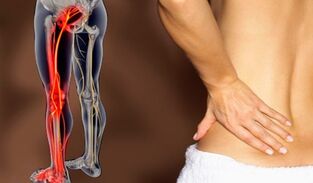 But since not only can they provoke the onset of back pain, there is another set of symptoms that can accompany low back pain and indicate pathology of internal organs or cancer. Therefore, you need to be especially careful about your condition when it appears:
But since not only can they provoke the onset of back pain, there is another set of symptoms that can accompany low back pain and indicate pathology of internal organs or cancer. Therefore, you need to be especially careful about your condition when it appears:
- rapid and unnecessary weight loss;
- incisions and pain in groin, perineum;
- increased urination, soreness;
- increase in body temperature, chills;
- changes in skin color in the epicenter of pain;
- menstrual irregularities, unusual discharge.
If low back pain is accompanied by one or more of the above symptoms, you should see a doctor immediately. When symptoms appear from the first group, consultation with a neurologist is required, from the second, the help of a urologist, gynecologist, endocrinologist or other close specialists is needed. The therapist will help you understand exactly which doctor to contact.
Causes of occurrence
All causes of back pain in the lumbar region can be divided into 2 groups: diseases of the back and pathologies of internal organs, in particular, gynecological diseases, pathologies of the kidneys, organs of the gastrointestinal tract, endocrine disorders. But still, more often they are a consequence of the development of changes in the spine and the muscles that surround it. The most common causes of back pain are:
- osteochondrosis;
- spondylosis;
- inflammatory diseases of the spine;
- myofascial syndrome;
- ankylosing spondylitis;
- scoliosis;
- injuries.
However, low back pain can also be the result of overload or certain physiological changes. In such situations, they do not require special treatment, but only a decrease in physical activity and a more sparing daily regimen.
Osteochondrosis and intervertebral hernias
Osteochondrosis is the most common disease of the spine. Its development is often accompanied by inevitable age-related changes, as almost every elderly person has his or her symptoms to a greater or lesser extent.Osteochondrosis is the price of humanity to pay for the ability to walk straight. It is characterized by a gradual destruction of the intervertebral discs, their thinning, a decrease in elasticity and durability. As a result, they cease to cope with stress and may become bloated. Thus, intervertebral hernias are formed.
Most often, osteochondrosis affects the intervertebral discs of the lumbar spine. When they emerge in the spinal canal or in the foraminal foramen, the nerves are almost inevitably damaged, which leads to the appearance of acute pain in the lower back and their radiation to the legs and buttocks.
Spondylosis
Spondylosis is a complication of advanced osteochondrosis, in which the intervertebral discs are almost completely destroyed, and due to ongoing degenerative processes and an increase in load on the spine along the edges of the vertebrae, bone extensions called osteophytes form.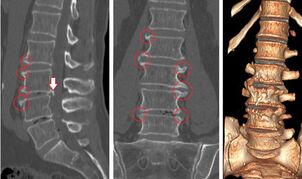 Therefore, there is a high risk of compression and damage to nearby nerves. This causes severe pain that can radiate to the feet.
Therefore, there is a high risk of compression and damage to nearby nerves. This causes severe pain that can radiate to the feet.
Inflammatory diseases of the spine
Most often, inflammatory diseases of the spine occur in young people, and mainly in men. They cause severe pain that bothers even at night, which is their specific change. As it progresses, in the absence of timely treatment, the pain becomes stronger and bothers the person more often.
It is not uncommon for patients to seek medical help several years after the first symptoms appear. As a result of such a long course of the inflammatory process in the spine, irreversible changes can occur, which can ultimately lead to immobility and disability.
Sometimes, in addition to back pain, there are concerns in the ankles and arms. In such cases, the cause of concern may be arthritis, osteomyelitis.
Myofasiale Syndrome
Myofascial Syndrome is a common pathology in which pain occurs after prolonged standing in an uncomfortable position or after physical exertion. Slightly more often, myofascial syndrome occurs in women. With it, back pain occurs after careless movement or physical exertion. Its distinguishing feature is the presence of so-called causal points in the spasmodic muscles in the lumbar region and buttocks, the pressure on which leads to a sudden attack of pain. Myofascial syndrome significantly reduces the quality of human life, but does not pose a serious threat.
Bechterev's disease
Ankylosing spondylitis or ankylosing spondylitis is a chronic joint disease that mainly affects the sacroiliac joints, spinal joints and surrounding soft tissues. With this disease, people worry about low back and sacral pain and stiffness of movements, but the symptoms usually disappear without leaving a trace in the afternoon and night.

Furthermore, physical activity has a beneficial effect on patient well-being and contributes to the elimination of pain syndrome. Quite specific symptoms of ankylosing spondylitis are flexion, arcuate curvature of the spine, and progressive restriction of mobility.
ScoliosisScoliosis is a lateral curvature of the spine. It can be of varying severity, which directly affects the intensity of back pain and other symptoms. Since the deformity of the spine leads to the displacement of all anatomical structures, the nerves are often compressed, which causes severe pain. In addition, other neurological signs may be present, including a feeling of numbness and paresis.
Compression fractures
In elderly people with osteoporosis and trauma, low back pain may be the result of an undetected spinal compression fracture. As a result, the vertebrae flatten and occupy an abnormal position, which leads to an incorrect distribution of the load on the spine, degenerative processes in the intervertebral discs, and the appearance of pain.
Physiological causes of low back pain
Performing strenuous physical work, intense sports training creates an increased load on the muscles, as a result of which lactic acid accumulates in them, provoking pain. Back pain is not uncommon with long-term wearing of uncomfortable shoes, especially with heels.
Also, low back pain is often noticed during pregnancy. In such situations, they are caused by a shift in the center of gravity and increased stress on the spine.
Diagnosis
It is recommended that you consult a neurologist to determine the causes of back pain in the lumbar region. Initially, you can get a consultation from a therapist, but, most likely, the doctor will again refer the patient to a neurologist.
While waiting, the specialist will conduct a detailed study of the patient, find out what worries him, what lifestyle he does, etc. Further, an examination is required, during which the doctor assesses the severity of the reflexes, performs neurological tests, and assesses the patient's mobility. Based on the results obtained, the doctor can make a preliminary diagnosis and understand what kind of violations led to the appearance of back pain and lower back pain.
To confirm existing assumptions, to determine the exact causes of pain, a comprehensive examination of the patient is performed, which may include:
- general and biochemical blood tests - with their help, changes in the blood are detected, indicating inflammatory processes in the body, the presence of an infection or tumor;
- general urine analysis - used to differentiate kidney disease as a cause of pain in the lumbar region;
- X-rays - show the presence of a change in the bone structures of the spine, signs of fractures, provide information about bone density and allow you to diagnose major diseases of the spine, as well as osteoporosis (detection of spinal pathologiesis a reason for a more thorough examination using CT or MRI);
- CT is a modern method of radiation diagnosis, which allows you to very clearly visualize all bone structures and detect the smallest deviations from the norm;
- MRI - provides comprehensive information about the condition of soft tissues and cartilage, including intervertebral discs, with the help of MRI it is possible to diagnose intervertebral hernias of any size, changes in blood vessels, tumors.
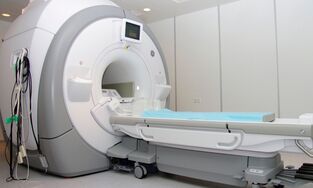
Treatment of low back pain
The treatment of back pain is chosen strictly individually. At the same time, it is always complex and includes symptomatic therapy, lifestyle changes and treatment aimed at eliminating the found causes of low back pain. Therefore, if the first 2 components of therapy are usually universal and prescribed to all patients, then etiotropic therapy is developed strictly individually, taking into account the existing disease.
In most cases, patients are initially offered conservative treatment, the main component of which is drug treatment. In more complex cases, it is also recommended to perform a course of physiotherapy procedures, manual therapy and exercise therapy.
But in any case, all patients with low back pain should:
- Stop lifting heavy objects and strenuous sports;
- to reduce weight in the presence of overweight;
- take regular breaks to warm up if a person is forced to sit for a long time;
- increase the level of physical activity, but avoid overload and hard work (daily walks, morning exercises, performing a special complex of exercise therapy, swimming);
- use a support bandage, which will lighten the load on the lower back and thus provide favorable conditions for early healing of the back.
Depending on the source of the pain, patients may be advised to stay in bed for two days or, conversely, increase their level of physical activity but within reasonable limits. For example, pain caused by nerve compression requires you to rest your back for a few days. In other diseases, on the contrary, moderate physical activity is one of the mandatory components of therapy. Helps to increase the effectiveness of medication treatment, reduce the risk of complications, and prevent disability.
But, unfortunately, conservative therapy can not always be used to treat low back pain. In some cases, it turns out to be ineffective and does not give any results even after several months of strict adherence to medical recommendations. In other situations, examination results indicate the presence of a pathology that can no longer be eliminated by any non-surgical method. In such situations, patients are advised to consult a neurosurgeon and perform appropriate surgical intervention to restore the normal anatomy of the spine.
Drug therapy
To improve the patient's condition and relieve pain quickly, the following are described:
- NSAIDs in the form of tablets, injections and topical preparations - have analgesic and anti-inflammatory properties;
- corticosteroids - given in short courses to control severe inflammation;
- muscle relaxants - essential to relieve muscle spasm, which is often a reflex reaction of the body to pain and exacerbates it;
- B vitamins - improve nerve conduction by normalizing the nutrition of nerve fibers and increasing the speed of transmission of nerve impulses.
For severe pain that cannot be tolerated, blockages may be performed. The procedure involves injecting an anesthetic solution directly into the area of pain or nerve fiber passage. Thus, it is possible for a while to completely stop the pain syndrome and improve the well-being of the patient.
But blockade has only a temporary effect and its implementation is possible only in a medical institution, as it is most often required to inject the drug at points located near the spine, where a mass of nerves passes. Therefore, an illiterate implementation of the procedure can result in serious and sometimes fatal consequences.
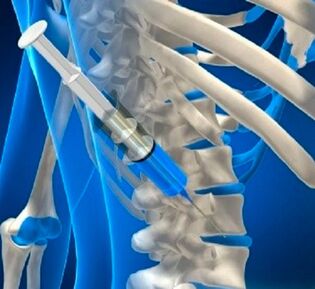
In addition to the medications listed above, a group of others is described that help eliminate the underlying disease that caused the pain syndrome. Therefore, patients may also be prescribed antibiotics, chondroprotectants, immunomodulators, and drugs of other groups.
Physiotherapy
Physiotherapy treatments are often prescribed for patients with spinal disorders. Thanks to the correctly chosen method of physical impact and frequency of procedures, it is possible to achieve a pronounced anti-inflammatory, analgesic effect, as well as to improve microcirculation, accelerate the elimination of local edema, muscle spasms, etc. Physiotherapy significantly increases the effectiveness of other treatment methods, but is used mainly only after the elimination of the acute process
Most often, patients are described:
- electrophoresis;
- UHF;
- ultrasound therapy;
- magnetic therapy;
- reflexology;
- diadynamic currents, etc.
As a rule, the course of procedures includes 8-10 sessions, which are performed with a certain frequency.
Manual therapy
With osteochondrosis, scoliosis and a number of other diseases, manual therapy sessions can have a truly amazing effect on the condition of the spine. But only a qualified chiropractor can competently perform a manual therapy session and benefit the patient, not the injury.
The use of special manual exposure techniques allows not only an improvement in microcirculation, over-toned and very relaxed muscles to be achieved, but also an increase in the distance between the vertebrae, as well as the normalization of their position. A qualified chiropractor is able to find the place where the nerve is pressed and relieve the pressure of the anatomical structures on it.
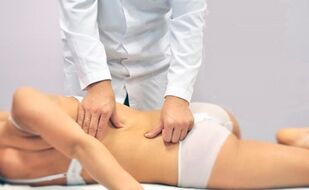
Literally, after the first session, most patients notice an improvement in their well-being and a significant decrease in the severity of the pain syndrome until it is completely eliminated. But, to consolidate the results obtained, it is recommended to undergo a full course of manual therapy, and in the future to undergo supportive courses.
exercise therapy
Physical therapy helps the body cope with the stress placed on it. For each disease a separate set of exercises has been developed, the regular implementation of which allows the solution of the most important tasks in the current situation. So, with the help of a proper complex of physiotherapy exercises, it is possible to get the muscles back to normal tone and strengthen them. Thanks to this, the spine will have a lower load, which will become an effective prevention of disease progression and will create favorable conditions for its recovery.
Exercise therapy also helps to improve blood circulation to the affected area, which speeds up the flow of inflammatory processes and more quickly leads to a full recovery. Proper exercise for many conditions can help reduce back pain and reduce the frequency of its onset.
The training program is developed individually for each patient. This takes into account not only the type of pathology detected and the degree of its severity, but also the presence of concomitant diseases, the patient's level of physical fitness, his age and other factors. Only a specialist is able to accurately select the most effective and safe set of exercises.
is under his supervision during the first hours. In their course, the patient learns to correctly perform each of the proposed exercises in order to be beneficial. Gradually, the load increases, bringing it to the optimal level. But it is not recommended to increase the number of repetitions of the exercises yourself or to complicate them. Any changes to the physiotherapy exercise program are only introduced by a specialist.
The patient only needs to strictly follow his recommendations and practice every day in a comfortable environment. All exercises are performed at a slow pace. Any sudden movement is not allowed. But if pain arises during the lesson, the exercise should be stopped immediately and you should consult your doctor as soon as possible.
Surgery for back pain
Most often, the help of a spinal surgeon is needed for intervertebral hernias, the formation of which has led to spinal cord injury and the development of radicular pain. If the swelling is already formed, it is impossible to force it to retract in modern non-invasive ways. The only way to eliminate it and at the same time get rid of the back pain is to remove the intervertebral hernia through surgery.
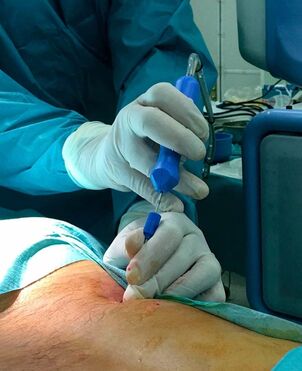
There are several types of surgeries used for intervertebral hernias. Specific surgical intervention tactics are determined based on the type, location, and size of the hernia:
- Nucleoplasty and hydroplasty are methods of percutaneous surgery that allow the removal of a portion of the nucleus pulposus through a tissue incision several centimeters in diameter and reduce the size of the hernia. Microdiscectomy is a radical way to solve the problem of an intervertebral hernia, which involves removing it or the entire disc through an incision up to 3 cm long. But unlike other methods, it allows you to eliminate a hernia of any size, regardless of its location in the spinal canal and release a nerve stuck even in the hardest part of the spine.
- Endoscopic surgery - involves removing a disc herniation through punctures up to 1 cm in diameter using special equipment with a video camera. It can be used to resect hernias of any size, but the technique cannot be used to remove neoplasms in anatomically difficult places.
Also, the help of a spinal surgeon is needed for scoliosis. In this case, all forces are directed to restore the normal axis of the spine. Previously, this required making a large incision that stretched virtually the entire back. But today it is possible to correct spinal deformity in a minimally invasive way through miniature incisions.
Different types of metal structures are used to restore the normal axis of the spine, but their essence is approximately the same. The structure is fixed to the beads with special screws and by correcting its tension at various points, it is possible to return the displaced beads to their place and fix them in the correct position. Modern types of metal structures allow, over time, to improve the initial result of the operation without new intervention in the body. This is achieved by correcting the position of the installed structure using special screws.
Surgical intervention cannot be avoided in case of spinal fractures. In such situations, you can get rid of back and lumbar pain only by restoring the shape, size and normal position of the vertebrae. Recently, kyphoplasty and vertebroplasty have been performed for this purpose. The essence of both operations lies in the fact that through a thin drilling needle, a special bone cement is injected into the destroyed vertebra as a result of an injury. 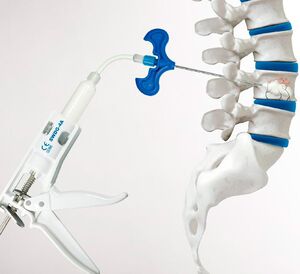 Fills all the free space and hardens after 10 minutes. But in severe compression fractures kyphoplasty is preferred, as it can also help restore the normal shape of the vertebra, which will ensure the correct distribution of the load on the spine in the future and reduce the risk of complications. This operation involves the preliminary insertion of a special balloon into the destroyed vertebra, which gradually swells, restoring the vertebra to its original appearance. After that, the balloon is lowered and removed, and the formed cavity is filled with bone cement.
Fills all the free space and hardens after 10 minutes. But in severe compression fractures kyphoplasty is preferred, as it can also help restore the normal shape of the vertebra, which will ensure the correct distribution of the load on the spine in the future and reduce the risk of complications. This operation involves the preliminary insertion of a special balloon into the destroyed vertebra, which gradually swells, restoring the vertebra to its original appearance. After that, the balloon is lowered and removed, and the formed cavity is filled with bone cement.
Thus, back pain can be the result of physiological changes, normal muscle fatigue or a symptom of serious pathologies of the back or internal organs. Therefore, if they occur regularly and especially against the background of the action of the same factors, do not hesitate and ignore the problem. Contact qualified specialists so that the treatment is as fast and easy as possible. And if the disease can not be recognized in the early stages of development, the modern level of neurosurgery will make it possible to eliminate it surgically with a minimal risk of complications.



































